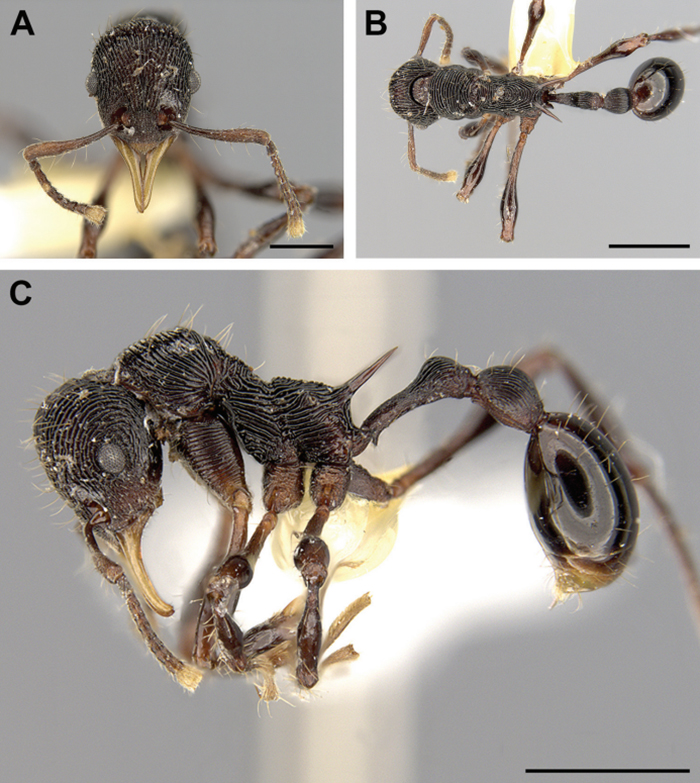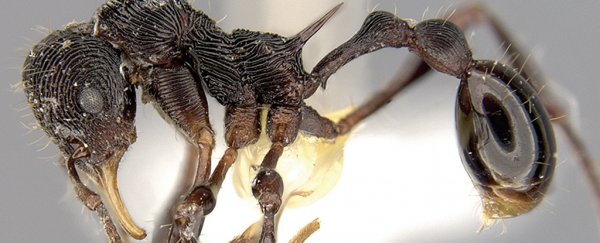Scientists working in Ecuador have discovered a new species of ant in the most unusual of places – the vomit of a bright orange 'devil frog' known as the diablito.
So far, we don't know much about the new tropical ant, which hae elongated mouthparts (possibly to help catch food), and has been given the formal name Lenomyrmex hoelldobleri, in tribute to German biologist and ant expert Bert Hölldobler.
"Sometimes people think that our world is very well-explored," lead researcher Christian Rabeling from the University of Rochester told Jason Bittel at National Geographic. "Nothing could be farther from the truth."
Unfortunately, the ant they found was very much dead, so the next step for the team is to find a living specimen to discover more about it.
As weird as it sounds, the practice of extracting ants from frog vomit is actually pretty well established, and can tell us a great deal about the health of an individual frog and the ecology of their species in general.
To figure out the stomach contents of a frog, researchers will gently fill its stomach with water until it throws up. Once that's done, the frog will released back into the wild.
Of course, since many different types of amphibians are on the endangered list, this kind of research always has to be carried out by experts working inside strict limits.
But the results of this unusual procedure can be very valuable to biologists, as the discovery of this new ant can attest to:
 Lenomyrmex hoelldobleri. Credit: Rabeling et al
Lenomyrmex hoelldobleri. Credit: Rabeling et al
And the good news is this never-before-seen ant might not be alone. The researchers say there are still more unidentified insects that have been found lurking in the devil frog's stomach.
If you want to compare the frog's eating habits to your own, 45 types of ant and nine types of mite have been spotted in sampled stomachs so far. Poisonous species like the devil frog rely on organic compounds found inside ants to produce their own toxins.
This isn't the first time a new species has been found inside another animal's stomach.
Jonathan Kolby, director of the Honduras Amphibian Rescue and Conservation Centre, who was not involved in this study, told National Geographic that Dunn's earth snake (Geophis dunni) was first discovered in the belly of another snake in 1932.
Further research on L. hoelldobleri might prove extremely challenging, with Rabeling telling National Geographic, "[The] difficulty is finding the ants!"
Sounds like they might need to tail the devil frog and find out about the best places to eat in town.
The findings are published in ZooKeys.
